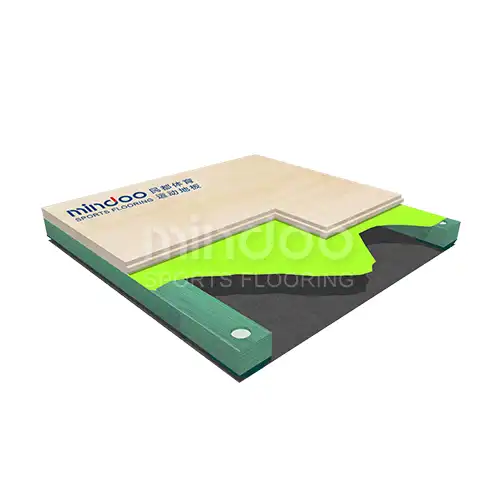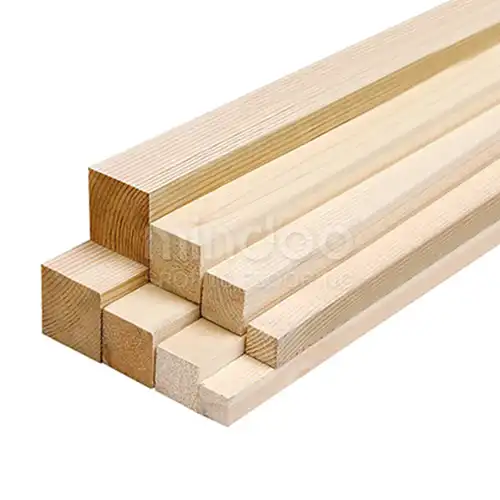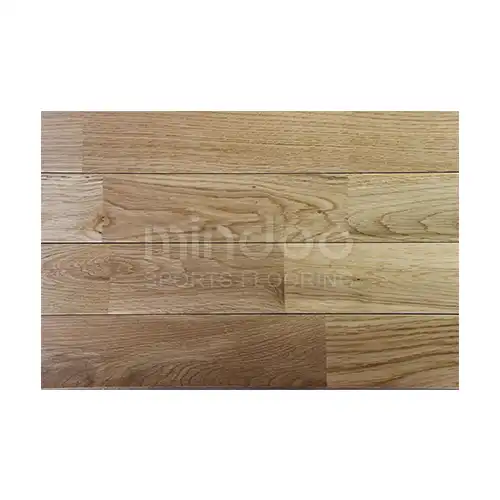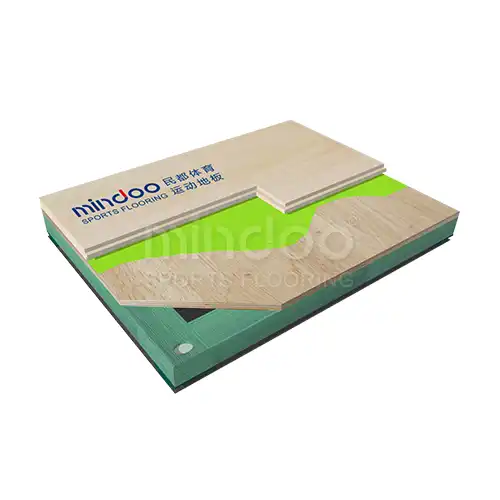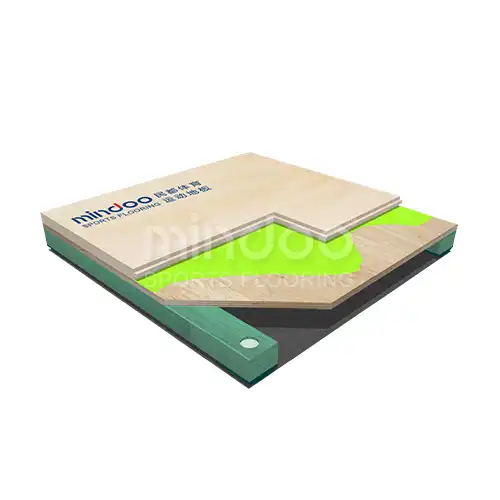Is maple wood flooring expensive?
The cost and value of maple wood flooring
The cost and value of maple wood flooring strike a delicate balance, offering homeowners a compelling investment that combines upfront affordability with long-term benefits. Maple, known for its durability and resistance to wear, presents a cost-effective solution when considering its extended lifespan and low maintenance requirements. While the initial purchase price might be competitive, the true value of maple becomes evident over time, as its robust nature withstands the challenges of heavy foot traffic and daily wear.
The installation costs of maple wood flooring are often reasonable, and its adaptability to various finishes provides homeowners with customization options that suit their design preferences. The versatility of maple, allowing for both natural clear coats and darker stains, adds intrinsic value by enabling a tailored aesthetic that complements any interior style.
In terms of long-term value, the durability of maple pays dividends. Its resistance to dents and scratches ensures a flooring surface that remains pristine, reducing the need for frequent repairs or replacements. This resilience contributes to a low-maintenance and cost-effective solution over the lifespan of the flooring.
Moreover, maple's timeless aesthetic adds inherent value to a property. Its light and consistent grain patterns create an ambiance of sophistication that endures trends, potentially enhancing the resale value of a home. The natural beauty of maple, coupled with its adaptability to evolving design preferences, ensures a lasting appeal that transcends changing fashions.
While the upfront cost of maple wood flooring may be a factor, its durability, customization options, and timeless allure position it as a cost-effective and valuable investment for homeowners. The balance between initial expenses and long-term benefits makes maple an attractive choice, offering both economic sensibility and enduring aesthetic appeal.
1. Understanding the price range
Understanding the price range of maple wood flooring is crucial when evaluating its cost and value. The cost of maple ground surface can shift in light of a few elements, including the grade of the wood, the thickness of the boards, and the general nature of the material. By and large, maple is viewed as a mid-range hardwood flooring choice, offering a harmony among reasonableness and quality.
Lower-grade maple, which may have more variations in color and grain patterns, tends to be more budget-friendly. On the other hand, higher-grade or select grade maple, known for its consistent grain and color, often comes with a higher price tag due to its premium appearance.
The thickness of the maple planks also influences the cost. Thicker planks are generally more expensive than thinner ones as they offer increased durability and can be sanded and refinished more times over the lifespan of the flooring.
Additionally, the type of finish applied to the maple wood affects its cost. Pre-finished maple flooring, which comes with a factory-applied finish, can be more expensive upfront but may save on installation costs. Unfinished maple allows for more customization but may require additional finishing work on-site.
Installation costs, which include factors like labor, subfloor preparation, and any additional treatments, contribute significantly to the overall expense. Geographical location and local market conditions can further impact the price range of maple wood flooring.
In summary, the cost of maple wood flooring can vary based on factors such as grade, thickness, finish, and installation. Understanding these variables is essential for making informed decisions that align with both your budget and the desired aesthetic and functional qualities of the flooring.
2. Durability and longevity
Durability and longevity are hallmark qualities when considering the cost and value of maple wood flooring. A flooring option that stands the test of time is maple, which is known for its durability and resistance to wear. The thick and hard organization of maple wood adds to its capacity to oppose scratches, gouges, and different types of wear, pursuing it a phenomenal decision for high-traffic regions in both private and business settings.
In addition, maple's intrinsic protection from dampness and twisting improves its strength, especially in conditions inclined to variances in mugginess. This characteristic makes maple wood flooring suitable for a variety of climates and ensures its stability over the years.
The longevity of maple wood flooring is further accentuated by its potential for refinishing. As a hardwood, maple allows for multiple refinishing processes throughout its lifespan, refreshing its appearance and addressing any signs of wear. This ability to revitalize the flooring surface extends its life and provides a cost-effective way to maintain its aesthetic appeal.
In essence, the cost and value of maple wood flooring go hand in hand, with durability and longevity standing out as key factors that contribute to its enduring popularity and investment-worthy characteristics.
3. Enhancing the aesthetic appeal
Enhancing the aesthetic appeal of maple wood flooring involves considering both its natural beauty and the design elements that complement this distinctive material. Maple wood, known for its light color and subtle grain patterns, offers a versatile canvas for various interior styles.
To elevate the aesthetic allure of maple wood flooring, one can explore different finishing options. A clear finish enhances the wood's natural hue, showcasing its inherent warmth and character. Alternatively, stains can be applied to achieve a customized tone that aligns with the desired aesthetic theme, whether it be a classic, modern, or rustic ambiance.
Embracing the inherent variations in maple's grain and figuring adds visual interest to the flooring. Selecting wider planks or unique patterns during installation can also contribute to an enhanced aesthetic. Additionally, coordinating the maple flooring with complementary design elements, such as furniture, wall colors, and décor, creates a cohesive and appealing overall look.
The cost and value of maple wood flooring extend beyond its durability and longevity to encompass its ability to transform spaces with a timeless and sophisticated charm. By understanding the potential for aesthetic enhancement through finishes, patterns, and thoughtful design integration, one can fully appreciate the investment in maple wood flooring for its enduring visual impact.
We at Mindoo know how important it is to choose the right flooring materials. Maple wood flooring can be found in a wide variety of styles and prices from us. We have the ideal solution for your home, whether you prefer a stained or natural finish. For any inquiries or additional information, please feel free to contact us at sales@mindoofloor.com. Our knowledgeable staff is always available to assist you.
Conclusion
In conclusion, the cost of maple wood flooring is influenced by various factors, making it a versatile option with both affordable and high-end possibilities. The grade and quality of the maple wood, the type of maple species chosen, and the manufacturing process significantly impact the overall expense. While some may find that soft maple offers a more budget-friendly option, those seeking a more luxurious feel may opt for the harder and more durable hard maple varieties. Additionally, the style and finish of the flooring, whether it's engineered or solid wood, and the intricacy of the installation process contribute to the final price tag. Homeowners should carefully consider their budget constraints, aesthetic preferences, and desired durability when deciding on maple wood flooring. It's essential to weigh the upfront costs against the long-term benefits and aesthetic appeal that maple flooring can bring to a space. Ultimately, the expense of maple wood flooring can vary widely, offering consumers the flexibility to choose a product that aligns with their financial considerations and meets their specific design and performance requirements.
